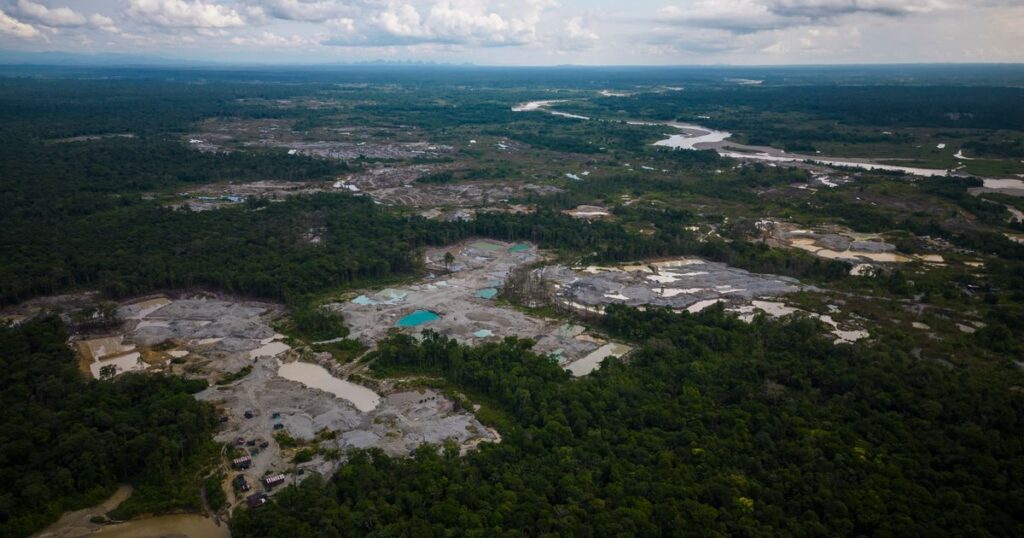BOGOTA, Colombia (AP) — Colombia’s government reported on Thursday a sharp overall rise in deforestation in the country’s Amazon rainforest for last year, reversing much of the progress made during a historic low in 2023.
The national meteorological agency said pasture expansion for cattle, illicit crops, illegal mining, and unregulated infrastructure development were to blame.
The data was released just a month after Colombia’s environment ministry had noted a drop in the destructive practice in the first quarter of this year, citing stronger community coordination and a crackdown on environmental crime.
The overall figures for last year show that the country lost 113,608 hectares (about 280,700 acres) of forest in 2024 — a 43% increase compared to the year before, when deforestation had dropped to its lowest level in over two decades.
The data presented by Environment Minister Lena Estrada Añokazi and the IDEAM meteorological agency, show the heaviest losses were concentrated in the Amazon region.
“These figures represent the work and the commitment this government has made to preserve forests and biodiversity,” Estrada said. “However, all the efforts we have made have not been enough, because deforestation persists.”
The worst-affected areas were the regions of Meta, Caqueta, Guaviare and Putumayo — all within the so-called Amazon Arc, a high-deforestation corridor where illegal cattle ranching, land grabbing and road construction are expanding.
According to IDEAM, more than 77,000 hectares were cleared in the Amazon alone, accounting for 65% of all forest loss in 2024.
Estrada said the rise in deforestation last year was partly driven by wildfires during a drought intensified by climate change.
“The most affected territory is the Amazon, a fragile region where vulnerable populations also live,” said Estrada.
Deforestation also rose inside protected national parks, including the regions of Tinigua, La Macarena and Chiribiquete, a UNESCO World Heritage Site.
IDEAM Director Ghisliane Echeverry said that despite the uptick in 2024, Colombia still maintains a net reduction in forest loss, compared to the baseline year of 2021.
In 2023, Colombia recorded its lowest deforestation level since monitoring began, a drop widely credited to better enforcement, Indigenous partnerships, and demobilization of armed groups in parts of the Amazon.
But early warning systems had signaled a rebound in forest clearing during the first half of 2024.
Still, despite the spike, deforestation remains lower than 2021 levels, continuing an overall downward trend since 2022.
___
The Associated Press’ climate and environmental coverage receives financial support from multiple private foundations. AP is solely responsible for all content. Find AP’s standards for working with philanthropies, a list of supporters and funded coverage areas at AP.org.

